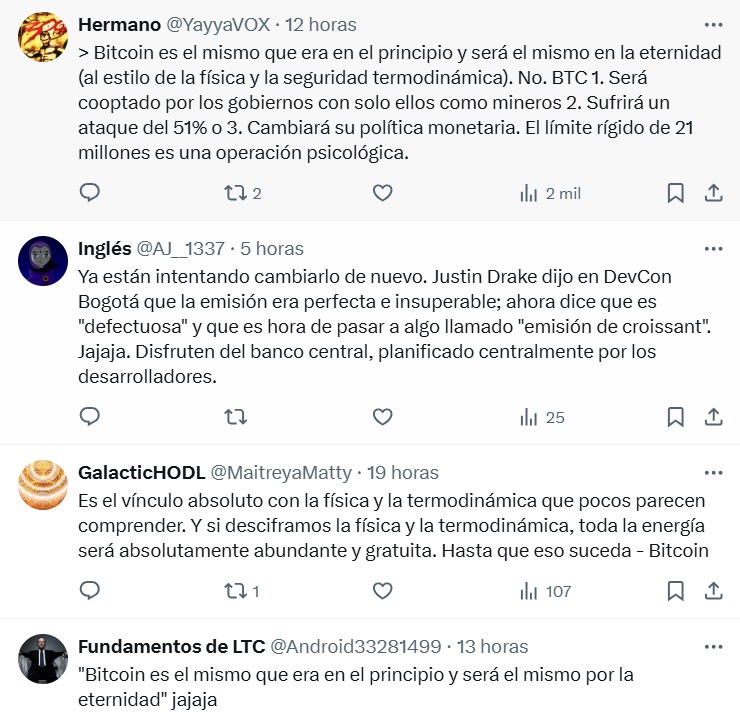“Bitcoin will be the same for all eternity,” said Svetski.
Some users expressed that the BTC offer limit could be altered.
The analyst Aleksandar Svetski recently pointed out that, unlike Ethereum, Bitcoin maintains an immutable monetary policy since its creation, which gives it a unique security within the ecosystem. For Svetski, the consistency in the BTC offer is what is fundamentally different from other cryptocurrencies, including Ethher (ETH), whose broadcast can change according to decisions of its developers.
Svetski’s response occurred in reaction to a tweet from David Hoffman – a co -founder of the Bankless medium – who Indian that there are currently 19,907,600 BTC, with an annual increase close to 1.3%, and that Ether inflation is ten times less than Bitcoin’s. Svetski questioned the importance of comparing emission figures, stating that “what matters is the guarantee,” not the amount of currencies in circulation.
Hoffman’s argument is that, although There will only be 21 million Bitcoin unitsthat stop has not yet been achieved since the currencies are gradually emitted through mining. Highlighting that Ether inflation is much lower, the specialist suggests that BTC’s narrative as a fixed and “deflation” asset does not completely reflect the current reality. It is estimated that Bitcoin will reach its maximum limit around the year 2140.
However, Svetski explained that Ethereum can modify its supply policy in the future, which resembles a centralized system of money emission. In contrast, he argued that Bitcoin was designed to eliminate the currency issuer, transferring his control to fixed rules based on physical and thermodynamic principles.
Bitcoin “places money in the field of physics so that we can all dedicate ourselves to doing more significant things with our lives,” said.
It should be noted that Ethereum has already made significant adjustments in its monetary policy. As Cryptonotics reported, with the EIP-1559 update of 2021, a mechanism was implemented that burns part of the transaction rates, reducing the ETH offer according to the network activity.
This type of modifications, determined and applied by the community of developers and validated by the nodes, show that Ethereum’s supply policy is not recorded in stone, but can evolve according to the needs or consensus of your ecosystem.
Svetski also stressed that many current cryptocurrencies are more similar to Fíat money than they appear, since they depend on their emitters to control the creation of units. Bitcoin, on the other hand, breaks with that model: its offer is predictable and safe, which, according to the analyst, constitutes its main advantage over any other digital currency.
Bitcoin and trust: beyond the reduction of supply
The community reactions to Svetski’s comments reflected a debate on the security and predictability of Bitcoin against other projects.
Some users indicated possible vulnerabilities at the limit of 21 million BTC and They alleged that developers could try to modify it. Svetski He replied calmly: «I am not as worried as you. These people will soon find another brighter aspect to focus on ”, minimizing the alarm about these potential changes and suggesting that it is not worth worrying about things that have not yet happened.


Other comments They stressed that “the supply of currencies is not important, but credibility.” In that sense, a user described ETH as “an inefficient innovation fíat currency, which creates problems only to sell solutions.” According to this commentator, while Ether and other projects can adjust their policies through consensus between people – which makes them vulnerable to corruption – Bitcoin is governed by coded rules, backed by energy and mathematics.
There were also those who They emphasized that too credit is given to the reduction of the offer that occurs every four years in Bitcoin, and that the true confidence of the people lies in the certainty of their supply.


